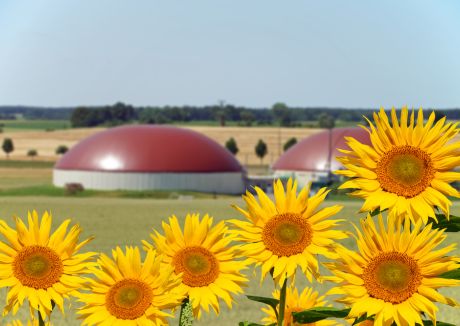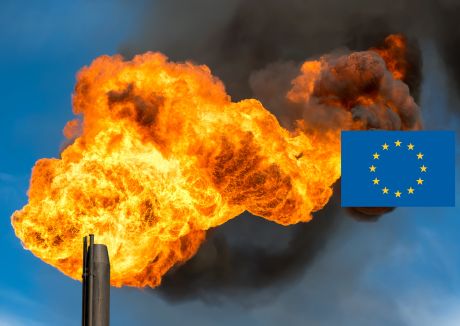To mark the energy industry’s ongoing progression towards Net Zero, here is a roundup of Gas Strategies Information Services’ energy transition coverage from the first half of 2023:
The energy transition discussion has accelerated this year as the sector seeks to promote energy security and prepare for upcoming Net Zero commitments.
Top of the list of discussion points across the sector this year has been the potential for both carbon capture and storage (CCS) and hydrogen. Various international energy firms are in the nascent stages of developing their CCS or hydrogen assets with some securing FID in recent weeks.
Of course, renewables are also high up on the priority list, despite a handful of IOCs pledging to invest further in gas and oil in the near-term.
Bioenergy: Policy support, gas market volatility boost sector’s growth prospects
Under the IEA’s Net Zero Emissions (NZE) by 2050 scenario, the use of bioenergy increases 10% per year in the lead-up to 2030, and the use of traditional polluting biomass falls to zero, helping to achieve the UN’s Sustainable Development Goal 7 on Affordable and Clean Energy
The US has the potential to add 15,000 new biogas systems, the American Biogas Council (ABC) estimates. Renewable natural gas (RNG) as road transport fuel guarantees the biggest CO2 reductions compared to all other renewable fuel alternatives and is the only carbon-negative fuel available. Moreover, the capacity factor of biogas systems stands at 95%, exceeding both wind and solar (22% and 17% respectively).
While Europe’s biogas industry has stagnated over the past decade, mainly because of support being rolled back on a government level in some countries, biomethane production has been growing recently, the European Biogas Association (EBA) says, partly because it is seen as a natural successor to natural gas and LNG as fuel in mobility. Biomethane production rose 20% year on year in 2021 to 37 TWh, or 3.5 Bcm.
In November, Shell – which has promised to invest ~USD 1 billion every year in low-carbon energy, including biofuels – bought Europe’s largest producer of biogas, Denmark’s Nature Energy, for USD 2 billion (EUR 1.9 billion) as part of a strategy to build “an integrated renewable natural gas value chain at global scale.”
Nature Energy currently operates 14 plants producing biomethane and has plans for an additional 30 plants in Europe and North America. Shell estimates these new facilities could deliver up to 9.2 million MMBtu/year (4,400 boe/d) of additional output by 2030.
Pedal to the metal: EU’s carbon market reform aims at faster energy transition
The reform of the EU Emissions Trading System (EU ETS), a carbon market based on a system of cap-and-trade of emission allowances for energy-intensive industries and the power generation sector, was approved by the EU Council and EU Parliament on 18 December 2022 and was expected to be formally adopted and come into force in the spring.
The ETS is the EU’s key tool for reducing greenhouse gas (GHG) emissions and currently covers around 40% of total EU emissions. It involves around 10,000 companies in the electricity and heating segments, as well as energy-intensive sectors, including cement, oil refining, steel, glass and paper production and commercial aviation.
Currently, the reduction target stands at 2.2% per year in the period 2024-2030, but under the new system, allowances will be cut by 4.3% per year between 2024-2027 and by 4.4% per year in 2028-2030. According to data released by the EU Commission, there were 1,449,214,182 allowances on the market in May 2022, down from 1,578,772,426 at the same time in 2021.
The revised ETS system expands its coverage to new sectors, including maritime transport – the segment will be introduced gradually between 2024-2026 – while creating a separate ETS scheme for buildings and road transport, as well as fuels for other sectors, such as manufacturing.
The EU ETS reform envisages that up to EUR 65 billion in EU funding will be allocated to address the carbon pricing impact of the proposed new ETS for buildings, road transport and fuels for additional sectors, with part of the revenues of these markets going towards the EC’s Social Climate Fund, which was established on 17 December 2022.
As we develop CCS, the hydrogen technologies will follow’: SSE Thermal
Last December, UK utility SSE Thermal and Norwegian multinational Equinor announced that their proposed Keadby 3 project in North Lincolnshire, which consists of gas-fired power plant capable of generating up to 910 MW, equipped with CCS technology, had become the first project of its kind to be granted planning consent from the UK government. It marked a major step towards SSE Thermal’s planned delivery of a series of low-carbon projects, to help create a net-zero power system in the UK by 2035.
Having been granted planning consent in December, the next steps for Keadby 3 include the UK government’s CCS cluster sequencing process, which will give the project the opportunity to receive a long-term contract and allow SSE Thermal and Equinor to deploy carbon capture technologies and connect to shared CO2 pipelines being developed as part of the East Coast Cluster (ECC) proposal in England, which includes Keadby 3.
According to Katy Burke, engineer manager, Keadby Carbon Capture Project, CCS in the UK has “been a rollercoaster of highs and lows.” Over the years, “SSE has themselves attempted to deploy CCS projects, with the most recent project being at Peterhead.” Though the UK government decided to stop the competition process it was running at the time for CCS, there has recently been “a shift again in mood, in the UK and globally,” she adds.
As a large, industrialised part of eastern England, the Humber represents an ideal deployment opportunity for the low-carbon projects being developed by SSE Thermal and its partners, says Burke.
Burke believes that for the energy transition to succeed, creating synergies and encouraging knowledge sharing between companies is key. “We’re shifting towards a much more collaborative approach, partnering up with other industry stakeholders,” she says. “For example, our partnership with Equinor gives us insight in the CCS sphere. For their part, they pick up knowledge from SSE for the power generation aspect.
Reaching new heights: Is space-based solar power a viable net-zero solution?
Work is progressing to develop a scalable and viable alternative to land-based solar power. Space-based solar power (SBSP) and the notion of beaming solar power from space to generate electricity could become reality in the next twenty years.
A study in 2021 by consultancy Frazer-Nash founds SBSP could deliver a levelised cost of electricity between GBP 35/MWh and GBP 79/MWh, making it “a highly attractive proposition for the UK’s energy mix.” However, it estimated an 18-year development plan could cost between GBP 7.5 billion (USD 9.3 billion) and GBP 16.3 billion, meaning significant funding is needed.
The road to commercial viability for SBSP is long. Martin Soltau, co-CEO of SBSP developer Soltau’s Space Solar, has embarked on a 12-year plan to commission the company’s first 2-GW power stations in space. Phase two of the project, Soltau says, is pivotal, as by the plan’s sixth year it expects to demonstrate end-to-end power beaming of several megawatts of power.
“Although most of the IOCs know of the concept, it’s a bit of a journey from awareness to doing due diligence and working out where they might play in the value chain. At this stage there are a number of programmes globally where there is small-scale research going on – but there aren’t fielded systems,” says Soltau.
To try and counter the energy sector’s skepticism, the UK government Department for Business, Energy and Industrial Strategy (BEIS) launched a grant programme last July, offering up to GBP 6 million to entrants developing technologies progressing the field of SBSP.
Power up: EV sales go from strength to strength and lithium takes centre stage
The global EV drive is happening just as a growing number of countries are announcing targets to phase out internal combustion engine (ICE) vehicles by 2030, while in the US, the state of California – the country’s most populous – last year approved to phase out the sale of all gasoline-powered vehicles by 2035.
“We anticipate that the entire zero emission vehicle (ZEV) sector will see rapid growth over the next few years beyond only the EV sector,” Kyle Ness, global chief engineer, BEV, at US carmaker Nikola, tells Gas Matters. “This is driven by a combination of consumer pressure and local, state, and federal regulation, which is driving for reductions in net GHG emissions.”
The projected growth in EV sales is set to renew the need for natural gas to balance energy systems. According to the Global Gas Outlook 2050 released in January by the Gas Exporting Countries Forum (GECF), the increased reliance on EVs is expected to have a “considerable impact” on energy grids. Natural gas demand for power generation is expected to reach 2,340 Bcm globally by 2050.
Ness says the transition and adoption of ZEVs will be through a diverse set of technologies, including BEVs and fuel cell electric vehicles (FCEVs), which are powered by hydrogen. “Both BEVs and FCEVs will require increased utilisation of the existing electric infrastructure. It is expected that a diverse energy solution set will be required to meet the charging and hydrogen production needs for both BEVs and FCEVs.”
As EVs gain popularity, McKinsey has projected that the entire lithium-ion, or Li-ion, battery chain, from mining through recycling, could grow by over 30% annually from 2022 to 2030, when it would reach a value of more than USD 400 billion and a market size of 4.7 TWh, up from ~0.7 TWh in 2022.
Lithium batteries also have a role in power grid energy storage systems. 77% of electrical power storage systems in the US rely on Li-ion batteries. But according to BloombergNEF’s most recent energy storage market outlook, the high cost of energy storage systems has pushed some companies towards cheaper chemistries like lithium iron phosphate (LFP), a lower energy density material that typically uses lithium carbonate as one of its precursor chemicals.
One challenge for the lithium industry is its carbon footprint. The extraction, processing, and transportation of lithium contribute to greenhouse gas (GHG) emissions, leading to debates about the environmental costs of lithium production. Ultimately, experts argue that the overall impact of EVs remains favourable. MIT researchers highlight that EVs consistently result in lower emissions than cars with internal combustion engines.
Taking the leap: Where do IOCs fit in the investment landscape for renewables?
On the question of whether oil majors are investing enough in renewables, the answer varies depending on who is asked. In an interview with the Observer in May 2022, ex-BP CEO Lord Browne said commentators looked for greenwashing at every energy company, regardless of their investments. “If you said we’re spending a billion dollars, they’d say ‘spend two billion’. Striking the balance is a continuous debate,” he noted.
The disparity between US and European majors in their energy transition approaches is clear. “The European super majors are still interested in investing in solar and wind facilities, but the US players have largely said, ‘we’re going to let the utilities do that. Our expertise and competitive advantage is investing in oil and gas, and the related development of both carbon capture and storage technologies, as well as hydrogen’,” Charles Baillie, co-president of private equity powerhouse Quantum Energy Partners says.
From a private equity perspective, renewables is a much hotter prospect than oil and gas, Baillie claims: “renewables investing is mainstream. We have three or four private equity competitors that invest in oil and gas, while more than 100 private equity competitors are investing in the energy transition and in renewables. Having said that, very few of those competitors have meaningful track records.”
There are clear benefits that majors can bring to the table in advancing various clean energy technologies, including expertise and financial war chests. “The whole renewables supply chain needs more investment and now would really be a good time for IOCs to use their increased profits from last year to progress the energy transition,” says Christoph Zipf, communications manager for NGO WindEurope.
This material was first issued to subscribers of Gas Strategies Information Services (Gas Matters, LNG Business Review and Gas Matters Today). Much more than gas, Information Services covers a broad variety of topics across the global energy transition.
To find out more about how Gas Strategies can support your organisation with any of the points in this blog or regarding any aspect of the energy transition, then get in touch today.








